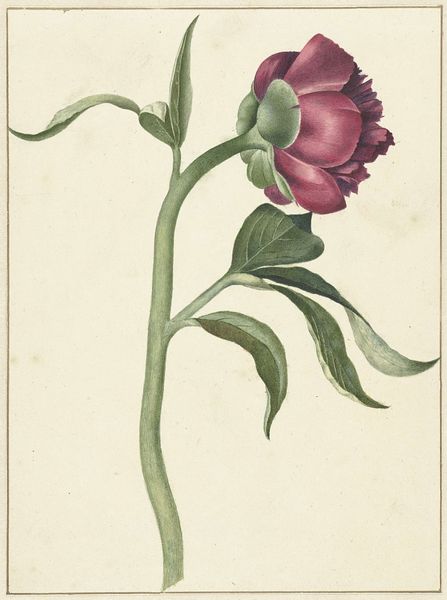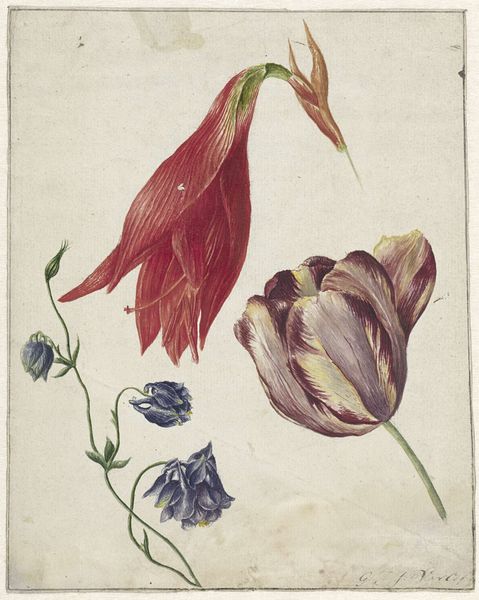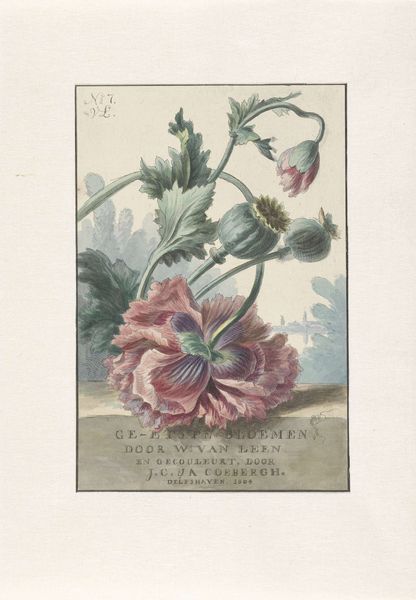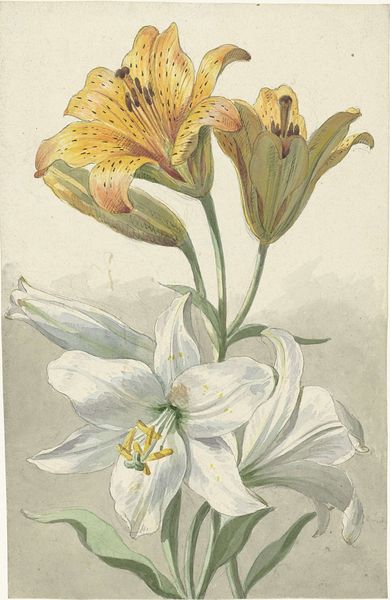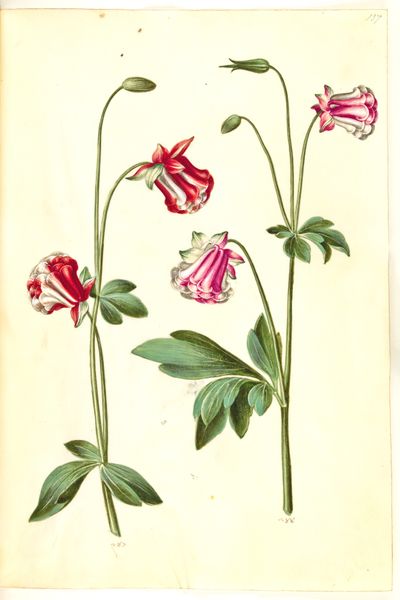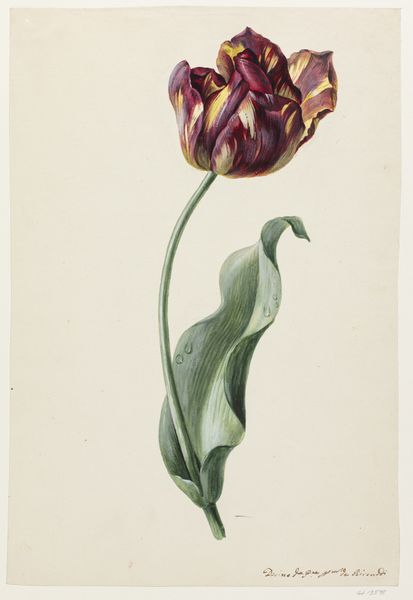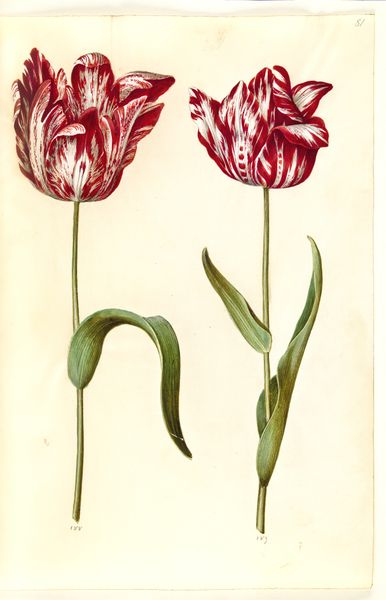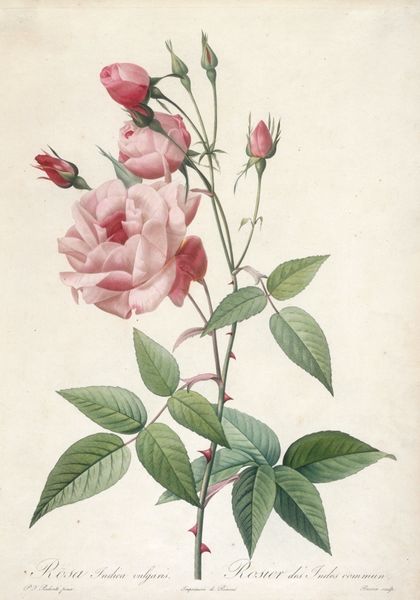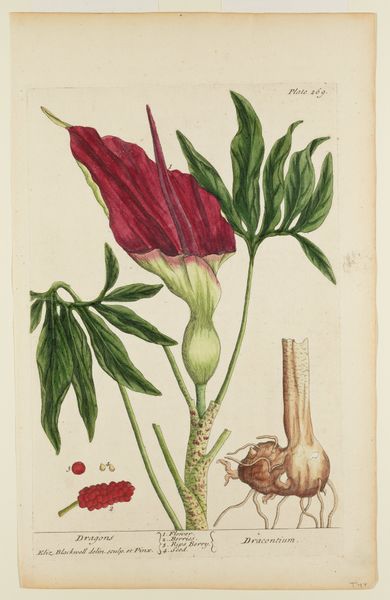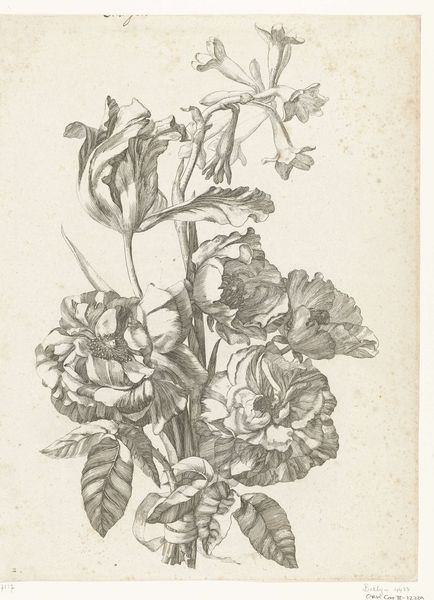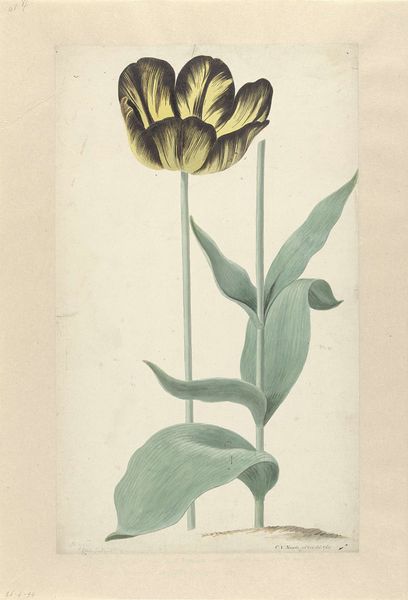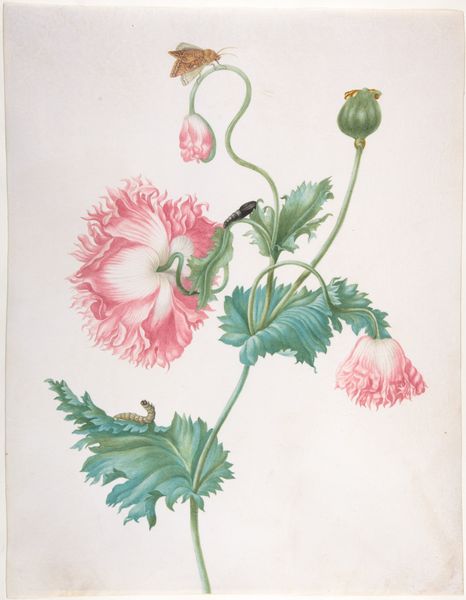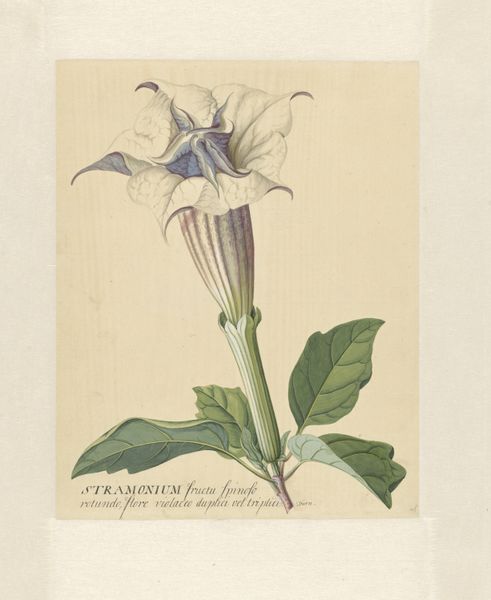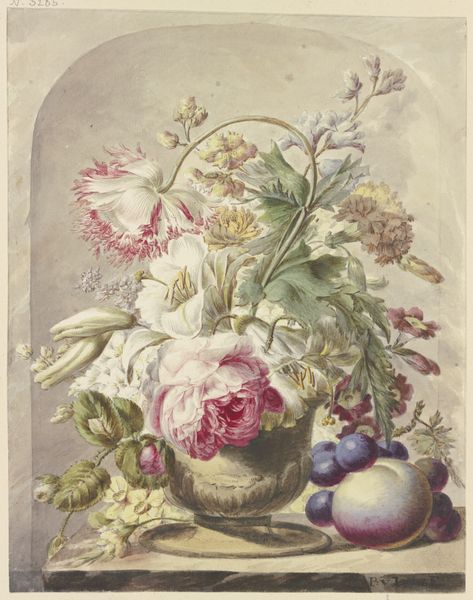
Dimensions: height 154 mm, width 255 mm
Copyright: Rijks Museum: Open Domain
Willem van Leen made this watercolor of a tulip and a poppy sometime in the late 18th or early 19th century, when the Dutch Republic was in decline and being incorporated into France. Van Leen specialized in floral paintings, a genre with a long history in the Netherlands. But they weren't simply decorative. The Dutch interest in botany and natural history, coupled with the intense demand for luxury goods, meant that paintings of flowers carried meanings related to science, commerce, and status. Take tulips: in the 17th century, rare bulbs triggered a speculative frenzy known as "Tulip Mania." Here, the tulip's variegated petals might refer to the wonder of natural variation or the transience of beauty and wealth. To understand the cultural significance of this modest artwork, historians would consult sources on Dutch trade, art markets, and the fashion for collecting botanical specimens.
Comments
No comments
Be the first to comment and join the conversation on the ultimate creative platform.
